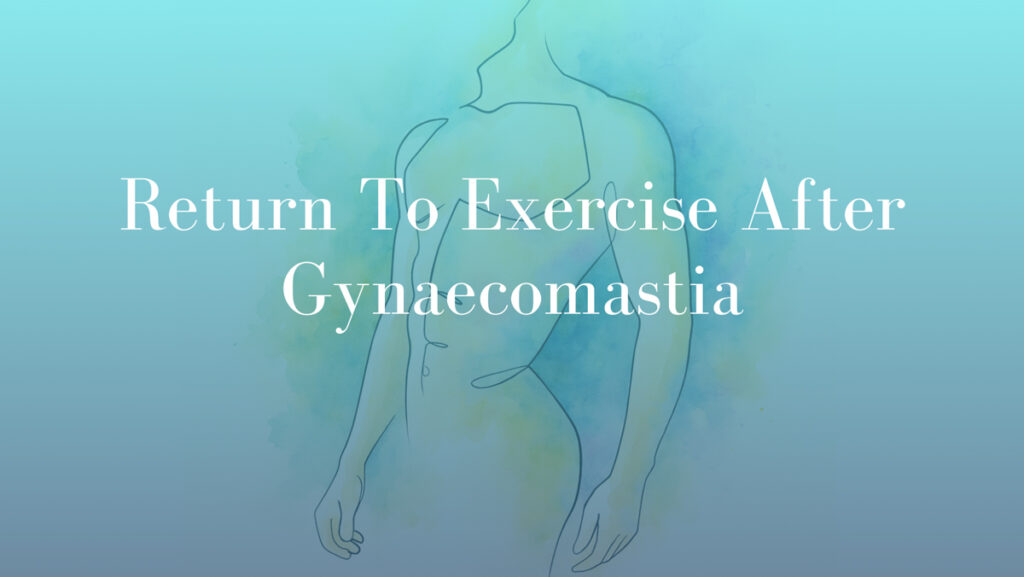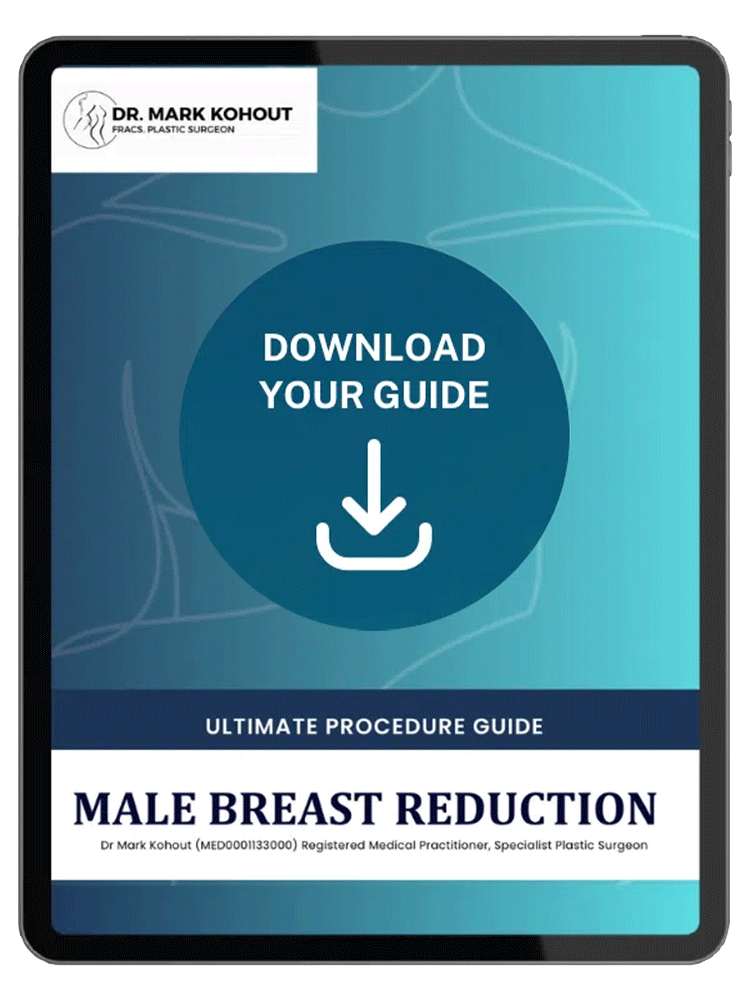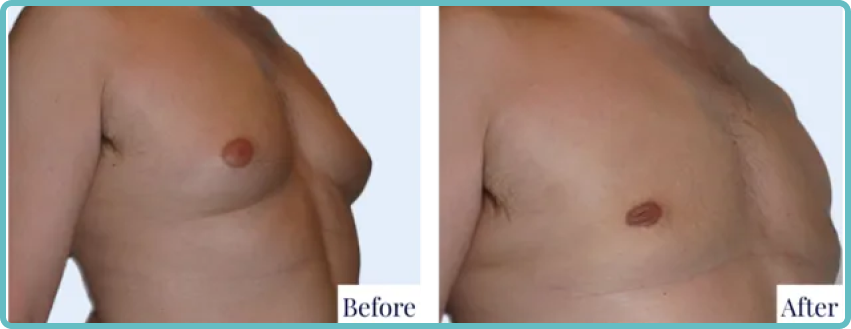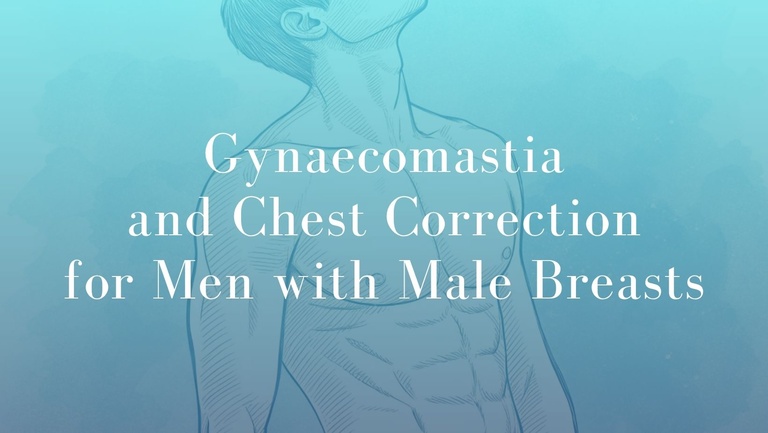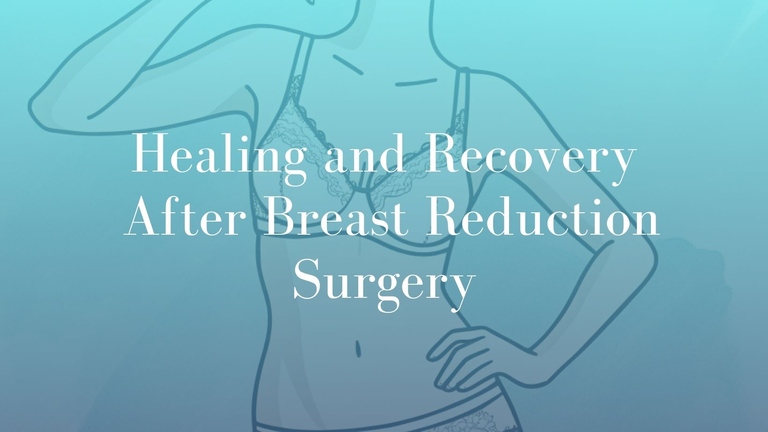
For men who undergo gynaecomastia surgery, also referred to as male breast reduction, the thought of returning to regular fitness routines is often front of mind.Many patients who choose this procedure are already engaged in exercise or are motivated to improve their physical health. Once the operation is over, they are eager to resume training, whether that means lifting weights, swimming, or engaging in cardiovascular exercise. However, the period immediately after surgery requires caution. The body needs time to heal, and exercise places physical stress on the very areas that are recovering. Returning too quickly can disrupt healing, increase swelling, or cause unnecessary complications.
At his Sydney practice, Dr Mark Kohout, Specialist Plastic Surgeon, has treated many men who want clear, practical advice on when and how to safely return to activity following gynaecomastia surgery. A staged and thoughtful approach allows patients to regain their routines while protecting their recovery. This article discusses the mistakes patients often make when resuming exercise too early, outlines realistic timelines for different stages of activity, and explores supportive strategies that encourage healing without jeopardising results.
Understanding Gynaecomastia Surgery
What The Procedure Involves
Gynaecomastia is a condition involving the enlargement of breast tissue in men. It can be related to hormonal factors, weight fluctuations, genetics, or sometimes medications. Surgery to correct gynaecomastia can be performed in several ways. Liposuction may be used to remove softer fatty tissue through small incisions, while excision surgery is needed for firmer glandular tissue that cannot be removed with liposuction alone. Many patients require a combination of both techniques, particularly if their gynaecomastia has been present for a long time or involves both fat and glandular components.
Because the procedure targets an area of the body that is highly mobile and essential for everyday function, recovery needs to be carefully planned. The chest muscles are activated during many common movements, such as pushing open doors, reaching overhead, or even getting out of bed. After surgery, the tissues are more vulnerable to stress. Healing tissues can be disrupted if they are placed under strain too soon, which is why exercise guidelines are so important.
At his Sydney clinic, Dr Mark Kohout makes it clear to patients that surgery is only one part of the overall treatment pathway. Recovery is just as critical as the operation itself. Allowing wounds to heal properly, reducing swelling in a controlled way, and supporting the chest contour as it settles all contribute to the long-term stability of the outcome. These elements are directly influenced by when and how patients resume physical activity.
Why Exercise Needs Careful Timing After Surgery
The Role Of Exercise In Recovery
Exercise is widely recognised as a cornerstone of general health, and it also plays a role in surgical recovery. Gentle movement supports circulation, reduces the risk of blood clots, and helps prevent stiffness. For many patients, light activity also improves mood and reduces anxiety during the post-operative period. However, the timing and type of exercise matter greatly.
The Risks Of Exercising Too Soon
When exercise is resumed too soon after gynaecomastia surgery, the risks outweigh the benefits. The most immediate risk is increased swelling, as vigorous activity brings more blood flow to the chest. This can delay healing and prolong the recovery process. Another concern is bleeding under the skin, known as haematoma, which may require further intervention if severe. Sutures and incisions are also at risk of disruption if movement places too much tension on the area. Even when wounds appear healed from the outside, internal tissues may still be fragile.
Another complication of early activity is asymmetry. If one side of the chest heals under strain while the other side is left to settle naturally, the final contour may be affected. Lastly, early exercise can create extended downtime if it leads to complications, keeping patients away from the very activities they were so keen to return to. Balancing rest and gentle activity is therefore essential. By pacing the return to exercise and following professional advice, patients allow their bodies to heal while still maintaining mobility and general wellbeing.
Timeline For Returning To Exercise After Male Breast Reduction
Although every patient heals at a different pace, recovery after gynaecomastia surgery typically follows a staged progression. This timeline provides a general framework for returning to activity. It is important to remember that these phases are only guidelines, and each patient’s plan should be confirmed by the surgeon during follow-up appointments.
Week 0–1: Focus On Rest And Light Movement
During the first week, the emphasis is on rest and healing. Some patients mistakenly believe they should remain completely inactive, but this is not the case. Total immobility can slow circulation and increase the risk of blood clots. Gentle walking around the home is encouraged, helping to maintain blood flow and reduce stiffness.
Compression garments are typically worn continuously during this time, as they provide external support, limit swelling, and assist in shaping the chest as tissues begin to settle. Patients are advised not to lift, push, or pull anything heavy, and to avoid movements that raise the arms above shoulder height. These restrictions protect the chest and incision sites from unnecessary strain. Comfort and wound stability are the priorities in the first week.
Weeks 2–3: Gentle Mobility Without Chest Strain
By the second or third week, some patients may feel eager to resume more structured exercise, but caution is still required. It is a mistake to return to weightlifting or gym classes at this stage, as the chest tissue remains fragile. Instead, activity should continue to focus on walking and, if comfortable, light stationary cycling. Stretching for the lower body may also be possible, provided it does not involve pushing or pulling with the arms.
Posture is particularly important in this phase. Maintaining an upright stance can help reduce tension across the chest and support incisions. Compression garments are usually still in place, and patients are reminded that visible healing does not necessarily mean deeper tissues are ready for stress. Patience during this phase helps prepare the body for more active recovery later.
Weeks 4–6: Introducing Cardio And Non-Chest Strength Work
Four to six weeks after surgery, many patients are ready to expand their routines. However, it is still too early for high-intensity or chest-specific training. Patients who rush back into vigorous cardio or heavy resistance exercises often find themselves dealing with swelling or discomfort that could have been avoided.
The aim during this phase is to rebuild stamina gradually. Low-impact cardiovascular activities such as treadmill walking, elliptical training, or light cycling can be introduced. Resistance training may be started for non-chest areas, such as the legs, arms, or back, but weights should remain light and controlled. Any sign of swelling, tightness, or pain is a signal to reduce intensity. Compression garments may still be worn during activity, depending on the surgeon’s advice. This stage is about strengthening without compromising healing.
Week 6 And Beyond: Gradual Chest Training With Surgeon Clearance
After six weeks, many patients feel ready to return to chest exercises, but this step should only be taken once cleared by the surgeon. A common mistake is to resume bench press or push-ups at full strength, which can still place too much stress on the healing chest.
Instead, chest training should be reintroduced gradually. Bodyweight exercises or very light resistance provide a safe starting point, with intensity increased slowly over time. Any discomfort should lead to immediate modification. Contact sports or high-impact activities should remain off-limits until specifically cleared, as trauma to the chest area during this time can be disruptive.
It is important to remember that each patient’s healing journey is unique. Those who undergo liposuction alone may progress slightly faster, while those who require excision of glandular tissue may need more time. A tailored approach, confirmed during review appointments with Dr Mark Kohout in Sydney, ensures safe and effective recovery.
Gynaecomastia Before and After Images
Common Mistakes Patients Make When Returning To Exercise
One of the most frequent mistakes is ignoring post-surgical instructions. Some patients feel well and assume their recovery is complete, but internal healing lags behind how the body feels externally. Skipping follow-up appointments or disregarding medical advice can lead to complications that could otherwise have been avoided.
Another common error is underestimating the impact of chest exercises. Because the chest is central to so many fitness routines, patients may not realise how demanding even a single push-up or dip can be during recovery. Without clearance, these exercises are best avoided.
The role of compression garments is sometimes overlooked. These garments are more than a comfort measure, they actively assist in controlling swelling, supporting tissue, and shaping the chest. Discontinuing their use prematurely may compromise these benefits.
A further mistake is focusing too heavily on aesthetics rather than healing. Many patients are eager to see the final results of surgery and rush back into training to enhance their chest appearance. Ironically, this impatience can prolong swelling or cause issues that delay the very outcomes they are hoping to see.
Finally, some patients compare their progress to others, whether friends who have had the procedure or people posting online. Recovery is not uniform, and such comparisons can create frustration or false expectations. At his Sydney clinic, Dr Mark Kohout, Plastic Surgeon, reminds patients that individualised advice is far more reliable than external comparisons.
Supporting Recovery With The Right Habits
Exercise is only one part of a successful recovery. Lifestyle habits such as rest, nutrition, and stress management play equally important roles. Adequate sleep provides the body with the opportunity to repair tissues at a cellular level. Hydration and balanced meals rich in lean protein, vitamins, and minerals help supply the nutrients necessary for healing. Stress management and patience reduce the temptation to push the body too soon.
Open communication with the surgeon is another essential factor. Raising concerns early, whether they involve swelling, discomfort, or garment use, allows timely adjustments to the recovery plan. Supportive habits complement staged exercise and contribute to a smoother recovery pathway.
When To Seek Medical Review
Patients are advised to seek medical review if they notice signs that exercise may be interfering with recovery. Persistent pain, sudden swelling, or unexpected changes in chest shape should not be ignored. Wound drainage, bleeding, or any suspicion of infection also require attention. Changes in sensation, such as numbness or unusual discomfort, may be worth discussing at review.
Timely consultation with the surgeon allows these issues to be addressed promptly, reducing the likelihood of complications. At his Sydney practice, Dr Mark Kohout personally provides consultation, surgery, and follow-up care, ensuring recovery progress is carefully monitored and tailored advice is available at every stage.
Moving Forward With Safe Recovery
For men undergoing gynaecomastia surgery, recovery is as important as the operation itself. A safe return to exercise requires careful pacing, awareness of the body’s signals, and a willingness to follow professional guidance. By avoiding common mistakes, progressing gradually, and supporting recovery with healthy habits, patients can protect their healing and re-establish their routines safely.
FAQs About Returning To Exercise After Gynaecomastia Surgery
How Soon After Gynaecomastia Surgery Can I Start Walking Outdoors?
Light walking around the home is usually encouraged soon after surgery, as it helps circulation and supports mobility. Walking outdoors can often be introduced gradually in the first weeks, provided it does not involve long distances, hills, or carrying heavy bags. Your surgeon will confirm when outdoor walks are suitable for you.
Can I Return To Swimming As Part Of My Recovery?
Swimming should be delayed until incisions are fully healed and cleared by your surgeon. Entering pools or the ocean too early may increase the risk of infection and place unnecessary strain on the chest. Clearance is usually given only once wounds are stable.
Why Are Chest Exercises Riskier Than Other Types Of Training?
Movements that directly activate the chest muscles, such as push-ups or bench press, place tension on the very tissues that are healing after gynaecomastia surgery. This tension may disrupt the surgical site if performed too early, which is why these exercises are reintroduced last and always with surgeon clearance.
Is It Normal To Feel Tightness In The Chest During Recovery Exercise?
Some patients describe a feeling of tightness or pulling across the chest in the early weeks of recovery. This is often due to swelling and tissue adjustment. If the tightness is persistent, painful, or worsening, it should be reviewed by your surgeon to rule out complications.
What Role Do Compression Garments Play When Exercising Again?
Compression garments support tissues, reduce swelling, and help the chest settle into its new contour. Many patients are advised to continue wearing them when they resume light activity, particularly in the first month. The duration of use is tailored to each patient.
Can I Resume Yoga Or Pilates Instead Of Gym Work?
Gentle stretching and mobility exercises can often be resumed earlier than heavy lifting, but some poses still place tension on the chest or require arm elevation. Modified versions of yoga or Pilates may be possible, but it is important to avoid chest-loading positions until you are cleared.
What If I Feel Ready To Exercise Before The Recommended Timeframe?
Feeling physically well does not always mean tissues are ready for strain. Internal healing continues even after discomfort has reduced. It is important not to rely on how you feel alone, but instead to follow the specific guidelines provided during follow-up appointments with your surgeon.
Medical References
- Gynecomastia: Pathophysiology, Evaluation, and Management. Mayo Clinic Proceedings. https://pmc.ncbi.nlm.nih.gov/articles/PMC2770912/
- Gynecomastia: Etiology, Diagnosis, and Treatment. Endotext. https://www.ncbi.nlm.nih.gov/books/NBK279105/
- Gynecomastia in adolescent males. Annals of Pediatric Endocrinology & Metabolism. https://e-apem.org/journal/view.php?number=1034
- Enlarged Male Breast Tissue (Gynecomastia). Cleveland Clinic. https://my.clevelandclinic.org/health/symptoms/16227-enlarged-male-breast-tissue-gynecomastia
Next Steps with Dr Mark Kohout
If you are considering gynaecomastia surgery in Sydney and want to understand how your recovery – including your return to exercise – can be managed safely, you can arrange a consultation with Dr Mark Kohout, Specialist Plastic Surgeon in Sydney. Every recovery plan is tailored to the individual, meaning advice reflects your specific procedure and healing journey.
Further Reading
- Read Dr Mark Kohout’s Blog on Gynaecomastia and Chest Correction for Men with Male Breasts
- Read Dr Mark Kohout’s Blog on Managing Gynaecomastia Scars
Related Blog Posts
Gynaecomastia and Chest Correction for Men…
What is Gynaecomastia? Gynaecomastia is a condition characterised by the enlargement of glandular breast tissue in males. It can affect one or both sides of the chest and is caused…
Healing and Recovery After Breast Reduction…
Comprehensive Guide to Healing and Recovery After Breast Reduction Surgery Download Dr Mark Kohout’s Breast Reduction Surgery Guide Healing and Recovery After Breast Reduction: Timeline and Tips Breast reduction surgery,…
Managing Gynaecomastia Scars
Effective Strategies for Managing Scars After Gynaecomastia Surgery Gynaecomastia, a condition characterised by the enlargement of breast tissue in males, affects many men worldwide. While surgical intervention can effectively address this…
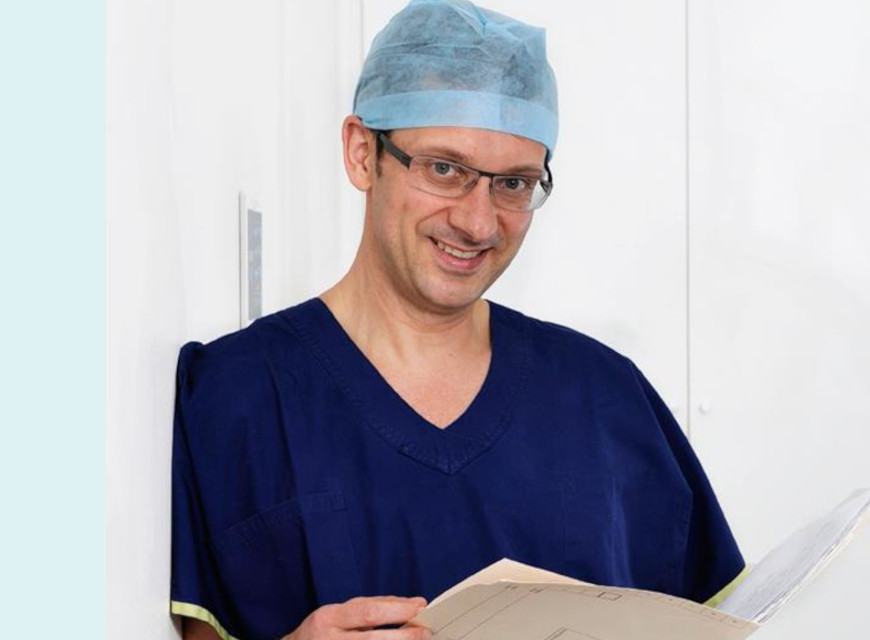
Experienced Plastic Surgeon
Dr. Mark Kohout
A qualified plastic surgeon who operates with care and integrity, based in central Sydney with over 20 years of experience in the cosmetic field. His extensive training and experience assures patients they are in highly trained surgical hands. Dr. Kohout is a dedicated, friendly professional who is committed to providing the high quality care, support and results, alongside his compassionate team.
Dr Mark Kohout (MED0001133000)
Specialist Plastic Surgeon
Specialist registration in Surgery – Plastic Surgery


